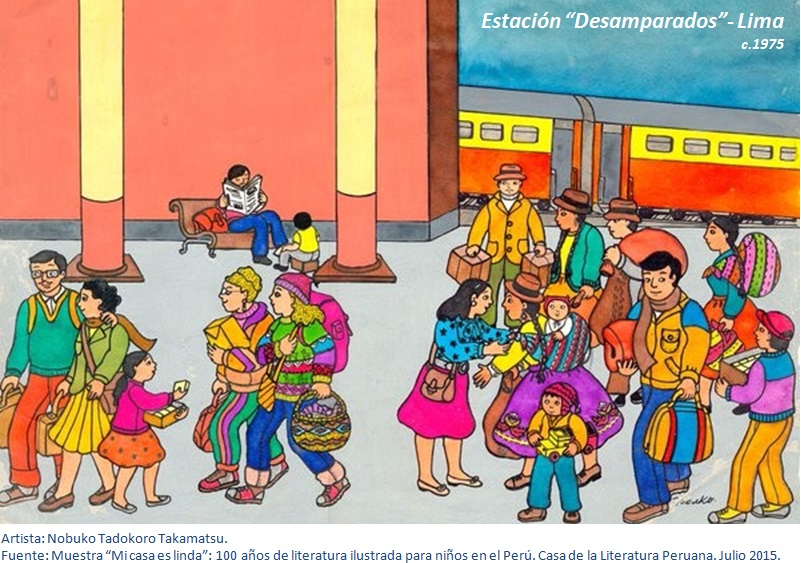“Lima” comes from the root of the Quechua verb Rima– “to talk”, and then the suffix “q” is added at the end to refer to a person who performs the action of the verb; in this case, we have Rimaq, which refers to “someone who talks” or “talker”.
At the beginning of the conquest of the Inca Empire, when someone from the highlands going to present-day Lima was asked about his or her destination, he would answer “Rimac”; if the same question was asked to someone from the coast, they would say “Limac”. The latter shows, according to Rodolfo Cerrón Palomino, the Aimara presence in terms of pronunciation; he explains that for Aimara speakers it was complicated to pronounce Rimac, then they pronounced Limac instead. An obvious question at this point would be: did people in Lima in those times speak Aimara? The researcher provides a positive answer, pointing out that it was the “Central Aimara” variety; he also presents a detailed linguistic analysis with more examples of the Aimara pronunciation: Sulco, Mala, Malanca, Lunaguaná, that would correspond to Surco, Mara, Maranca and Runaguaná, respectively. Furthermore, it is important to highlight that nowadays two ancient varieties of the Aimara family survive in the mountains of Lima (in Tupe district, province of Yauyos): Jaqaru and Cauqui.
As far as it is known, before the Spaniards there was no writing in Peru, and due to their presence, later on “Limac” could be written as Limaq, Limah or Limak, according to particular criterion. However, all these forms lost their final sound when pronounced by the Spanish; they only pronounced Lima due to their speaking habits.One more question is left:
who is that “talker” (Rimac / Limac) that we have mentioned?
Some authors consider that it is the Rimac River (one of the three rivers in Lima) because in particular months there are floods that bring rocks and mud, making a lot of noise; therefore, the river “talks”. However, there is another theory with more support: Rimac was a huaca (ancient sanctuary) and an oracle.
Cristobal de Albornoz, an important Spanish leader working in campaigns against the autochthonous religions in the Andes in the sixteenth century, mentioned in his writings that Rimac was a huaca for indigenous people from Lima that were called Ychmas. On the other hand, for Garcilaso de la Vega (a chronicler and writer, son of a Spanish conquistador and an Inca noblewoman), Rimac was an idol that could talk and answer any question, and the valley where it was had the same name.
![The Royal Library. National Library of Denmark. Guaman Poma. CHRISTOBAL DE ALBORnos, uecitador general de la santa madre yglecia[8]](http://blog.pucp.edu.pe/blog/limapah/wp-content/uploads/sites/848/2016/10/Albornoz-215x300.png)
The Royal Library. National Library of Denmark. Guaman Poma. CHRISTOBAL DE ALBORnos, uecitador general de la santa madre yglecia.
In conclusion, there is evidence that shows that Rimac could have been an ancient sanctuary or huaca, and the oracle itself in Plaza Italia.
Finally, one more reason that shows the importance of the history of Lima’s name is that although the Spanish founded “la ciudad de los reyes” (city of kings) – present-day Lima– on 18th January in 1535, this name got lost since the city itself already existed long ago, and Lima, its ancient name, has prevailed till today.

![The Royal Library. National Library of Denmark. Guaman Poma. LA CIVDAD DE LOS REIS DE Lima.[1]](http://blog.pucp.edu.pe/blog/limapah/wp-content/uploads/sites/848/2016/10/ReyesLima-211x300.png)
![Andina del Perú para el mundo. JAQARU. Lengua que se apaga, memoria en agonía.[4]](http://blog.pucp.edu.pe/blog/limapah/wp-content/uploads/sites/848/2016/10/Jaqaru-206x300.png)
![Proyecto de recuperación Plaza Italia .EMAPE. (Se observa la forma trapezoidal de la plaza)[12]](http://blog.pucp.edu.pe/blog/limapah/wp-content/uploads/sites/848/2016/10/PlazaSantaAna-300x169.png)